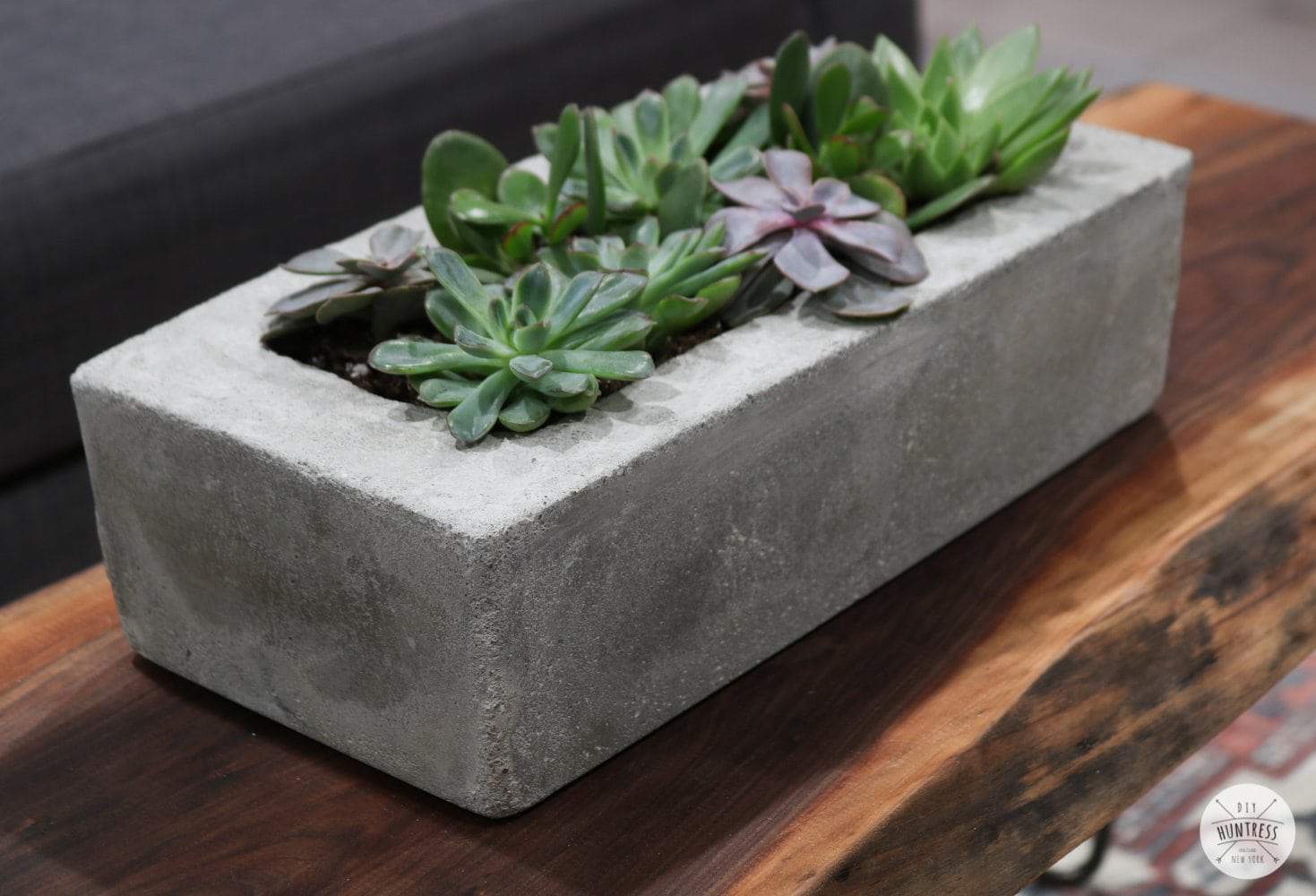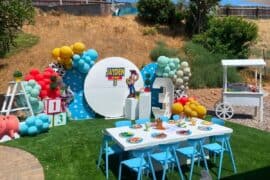Create Joy with DIY: Crafting Cement Planters with Your Kids
Hello creative families! Are you looking to spruce up your garden with a touch of personal charm or searching for a fun weekend project to engage with your kids? Look no further! Crafting DIY cement planters is not only a fulfilling activity that can add a unique flair to your green space; it’s also a wonderful opportunity to bond with your little ones and teach them about the joys of making something by hand. In this guide, we’ll go through the steps to make beautiful, sturdy cement planters that will impress your family and friends!
Why Choose Cement Planters?
Cement planters are all the rage in home and garden décor and for good reason. They offer a contemporary look, are highly durable, and can be customized in countless ways. Plus, involving your kids in the creation process not only helps to nurture their creativity but also teaches them about the science behind cement and the patience needed for crafting. Let’s get your hands a bit dirty and create memories along with adorable planters!
Gathering Your Materials
- Cement mix: You can find this at any hardware or craft store.
- Water: For mixing with your cement. The rule of thumb is about half the amount of your cement mix.
- A mixing container: Something to mix your cement in, like a bucket or a large bowl that you don’t mind getting a bit messy.
- A stir stick: This can be a paint stirrer or just a sturdy stick from your yard.
- Mold for your planter: This can be anything from an old carton, a plastic container, or a specially purchased planter mold.
- Cooking oil or non-stick spray: To coat your molds and ensure the cement doesn’t stick to them.
- Safety gear: Gloves and masks to protect your hands and lungs from the cement dust.
- Sandpaper: To smooth out any rough edges once your planter dries.
- Decorative elements (optional): Think pebbles, tiles, paint, or anything you’d like to adorn your planters with.
Step By Step: Crafting Your Cement Planter
Step 1: Safety First
Before you start, make sure everyone involved in this crafty adventure is wearing appropriate safety gear. Put on your gloves and masks to avoid skin irritation and inhaling cement dust. Remember, safety is part of the process, especially when crafting with kiddos!
Step 2: Prepare Your Molds
Apply a generous amount of non-stick spray or cooking oil to the inside of your molds. If you’re using a carton or any other disposable container, you can cut it away from the cement once it’s set. If you’re using a reusable mold, this step ensures that your planter will release easily after drying.
Step 3: Mix Your Cement
In your mixing container, blend the cement mix with water. Start with a 2:1 ratio of cement to water, adjust as needed until your mix reaches the consistency of a thick batter. Stir thoroughly to avoid lumps – kids love this part! It might remind them of baking, but with a twist of construction flair. Make sure to mix just enough for your planter and work relatively quickly once it’s mixed, as cement starts to set over time.
Step 4: Pour Your Mix
Now comes the exciting part! Fill your prepared molds with the cement mix. Gently tap the sides of the molds to remove any air bubbles which will ensure a smooth, solid planter once dried. Depending on the size of your molds, you may want to fill them only halfway, leaving room for the plant’s growth.
This is just the start of our exciting journey into making cement planters with your kids. Not only can this project spark creativity, but it can also add a personal touch to your home garden that you’ll cherish for years to come. Stay tuned for more steps on how to personalize and finish your planters!”

5 Things Parents Should Know in Preparing for Cement Planters DIY
Understanding the Basics of Cement
It’s important to have a bit of background knowledge about the main ingredient of our project: cement. Explaining to your kids that cement is a powdery substance made from limestone and clay, which reacts with water to form a hard, solid structure, can be a fascinating science lesson! Cement is different from concrete, though the terms are often used interchangeably. Cement is a component of concrete, along with aggregates like sand and gravel.
Timing is Everything
When working with cement, timing plays a crucial role. Cement begins to set quickly once mixed with water, so have all your materials ready and a plan of action before starting the mixing process. It’s a great lesson in preparing and working efficiently. Involve your children in the prep work, and use it as an opportunity to teach them about the importance of planning ahead.
Picking the Right Size and Shape for Mold
The mold you choose will determine the shape and size of your planter, so select wisely. Consider the space where you will place the planter and the types of plants you’ll pot inside. And remember, this is a project that can allow for a lot of creativity! Everything from traditional geometric shapes to quirky containers can make for wonderful planters. Even old toys or household items can be repurposed into molds for a unique twist!
Personalization Goes a Long Way
Encourage your kids to think about how they can make their planters truly unique. Before the cement sets, they can press in pebbles, marbles, or even shells for decoration. After the planters are dry and safe to handle, you can paint them, stencil designs, or add other decorative touches. This not only makes the planters special but also gives your children a sense of ownership and pride in their creations.
Safety Cannot Be Overstated
Working with cement can be messy and requires precautions. Always emphasize the need for safety gear like masks and gloves to protect from fine dust and alkali burns. Work in a well-ventilated area, preferably outdoors. Teach kids not to touch their faces during the project and to wash their hands thoroughly after. Taking the right safety measures will ensure that the fun is never overshadowed by an avoidable accident.
Finishing Your DIY Cement Planter
Letting It Dry
Once you’ve poured your cement into the molds, you will need to wait for it to dry. This waiting period is a great time to discuss patience and how sometimes you need to wait for good things to happen. Explain how the water is chemically reacting with the cement in what’s called ‘curing’ and that it might take at least 24 to 48 hours before you can unmold to ensure that the planters are strong enough.
Unmolding Your Masterpiece
When your planter is dry to the touch, and it feels hard when you tap it, it’s time for the moment of truth: unmolding! Carefully peel away or release the planter from its mold. If you’ve used a non-disposable mold, take extra care during this step to not break the planter.
Smoothing Things Out
After the unmolding, you might find some rough edges on your planter that need smoothing. This can be done with a bit of sandpaper. It’s another chance to involve your kids by allowing them to gently sand down their planter until it’s smooth to the touch.
With these tips and steps, creating a DIY cement planter can be an enriching experience for both you and your children. Not only do you end up with a unique home for your plants, but you also carry the memories of working together on a project that blooms just like the plants it will hold. Get ready to dive into the amazing world of crafting with cement, where the possibilities and the learning opportunities are as plentiful as your creativity!
See more great Things to Do with Kids in New Zealand here. For more information see here
Disclaimer
The articles available via our website provide general information only and we strongly urge readers to exercise caution and conduct their own thorough research and fact-checking. The information presented should not be taken as absolute truth, and, to the maximum extent permitted by law, we will not be held liable for any inaccuracies or errors in the content. It is essential for individuals to independently verify and validate the information before making any decisions or taking any actions based on the articles.




